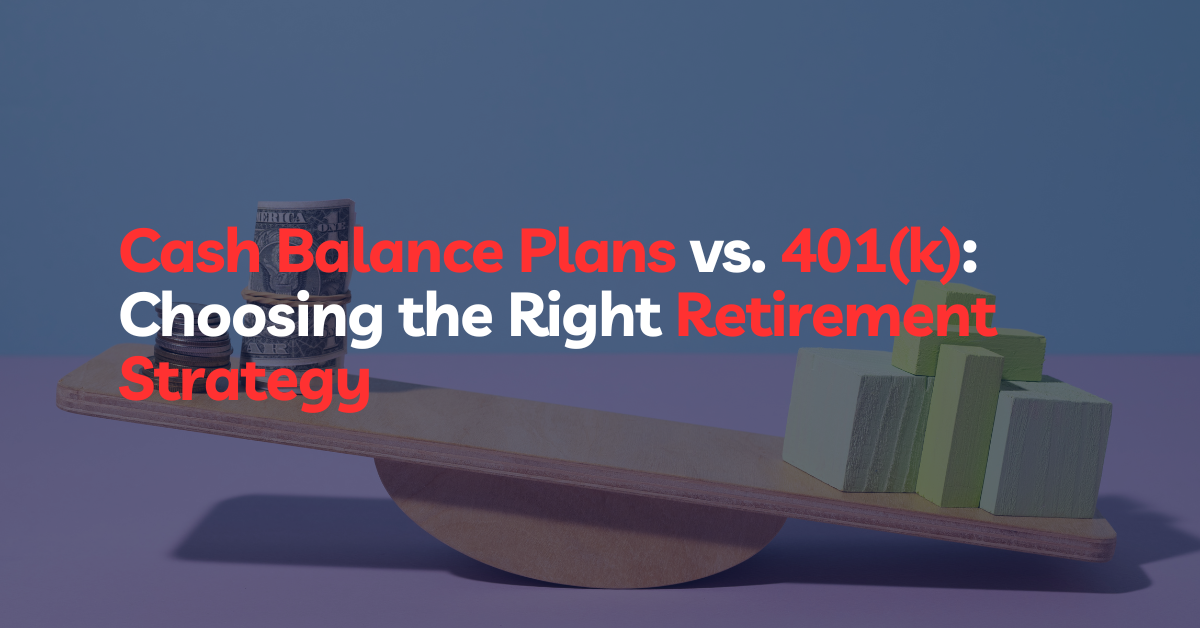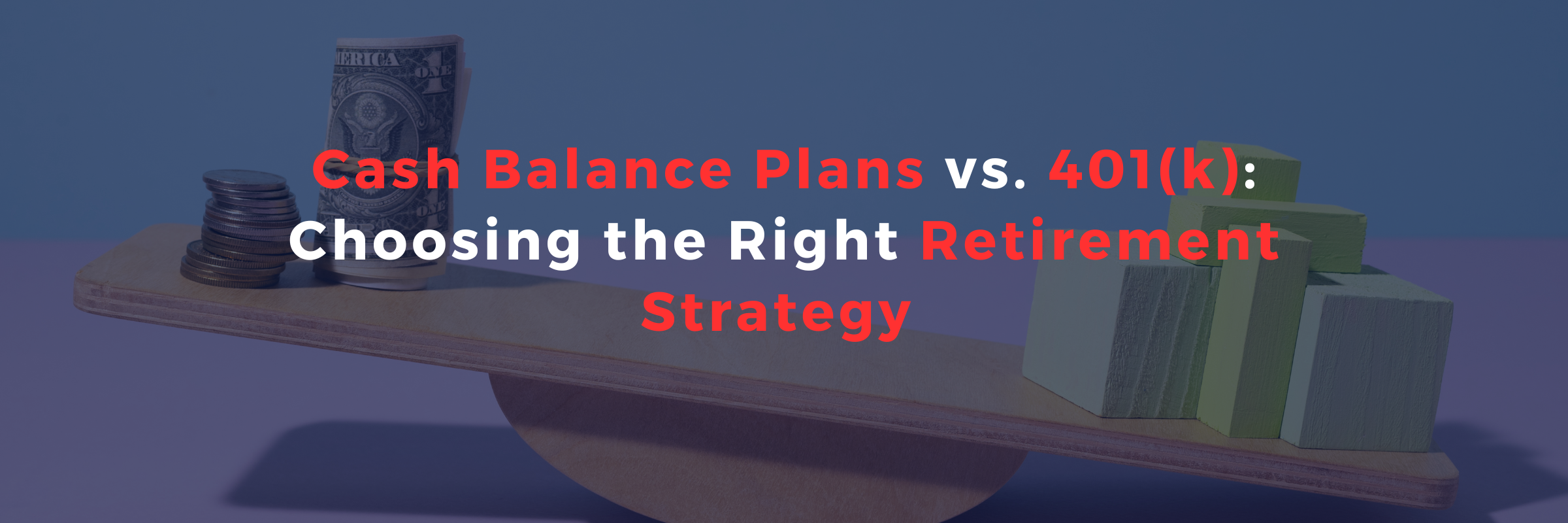
03 Sep Cash Balance Plans vs. 401(k): Choosing the Right Retirement Strategy

Introduction
When evaluating retirement plan options, business owners often compare cash balance plans vs. 401(k). But the conversation is broader: many companies also offer profit-sharing plans—either standalone or in combination with a 401(k). These plans each serve different purposes depending on company size, profitability, and participant income levels.
This guide explains the differences between business 401k plans, small business 401k plans, profit-sharing plans, and cash balance plans, helping you choose the right strategy for your team and your long-term tax planning.
Understanding 401(k) Plans
A 401k for small business allows employees to defer part of their salary on a pre-tax (or Roth) basis. Employers may choose to add matching contributions, but it’s not mandatory.
- Contribution Limits: Each year, the IRS sets annual deferral limits (e.g., $23,000 in 2025; $30,500 with catch-up for those over 50).
- Employee Control: Participants direct their investments, usually selecting from mutual funds or other options in the plan’s menu.
- Employer Role: Decide whether to offer matching contributions.
For many entrepreneurs, small business 401k plans are the first step in providing employee benefits while also building personal retirement savings.
Profit-Sharing Plans: An Employer-Directed Benefit
Profit-sharing plans are often paired with a 401(k). Unlike a 401(k), employees cannot contribute. Instead:
- Employer Discretion: Contributions are entirely up to the employer and may vary year-to-year depending on profitability.
- No Employee Withdrawals: Employees cannot access funds while employed.
- Employer Investment Control: Employers decide how funds are invested and can adjust them periodically.
This makes profit-sharing plans attractive for businesses that want flexibility—especially in years when profitability fluctuates.
Cash Balance Plans: Accelerating Savings for High Earners
Unlike 401(k) and profit-sharing plans, which primarily serve small and medium businesses, cash balance plans (CBPs) are designed for high-income participants such as physicians, dentists, and partners in professional firms.
- Contribution Potential: Contributions far exceed 401(k) and profit-sharing limits—often well into six figures annually.
- Tax Advantages: CBPs allow owners to defer large amounts of taxable income.
- Age Factor: Older participants can contribute more because benefits are based on actuarial calculations.
- Employer Discretion: Employers decide whether to implement CBPs, usually when several group members consistently earn $300,000+ annually.
Cash Balance Plans vs. 401(k) + Profit-Sharing
| Feature | 401(k) + Profit-Sharing | Cash Balance Plan |
|---|---|---|
| Contribution Source | Employee (401k) + Employer (Profit-Sharing) | Employer contributions only |
| IRS Limits | $69,000 (or $76,500 with catch-up in 2025) | $100,000+ depending on age & income |
| Investment Control | Employee (401k); Employer (Profit-Sharing) | Employer/actuary manages plan |
| Flexibility | High (employee deferrals, employer match/discretion) | Lower flexibility, but higher tax savings |
| Ideal For | Small to mid-sized businesses | High-income professionals, older owners |
Many businesses implement a combination approach: a 401(k) with profit-sharing to engage employees, plus a cash balance plan for owners and partners seeking maximum tax savings.
FAQs
Q1: What’s the difference between cash balance plans vs. 401(k)?
401(k) plans allow employee deferrals and optional employer match, while cash balance plans are employer-funded with much higher contribution potential.
Q2: How do profit-sharing plans fit in?
Profit-sharing is an employer-funded plan that often pairs with a 401(k), allowing flexibility in contributions depending on profitability.
Conclusion
The choice between cash balance plans vs. 401(k) (and profit-sharing) depends on your company’s size, income level, and long-term goals. 401k plans for small business with profit-sharing provide flexibility and employee engagement. For higher earners, especially in professional practices, cash balance plans can deliver unmatched tax deferrals and wealth-building opportunities.
By aligning your retirement planning design with your business’s goals, you can maximize savings, reduce taxes, and create long-term security for both owners and employees.
